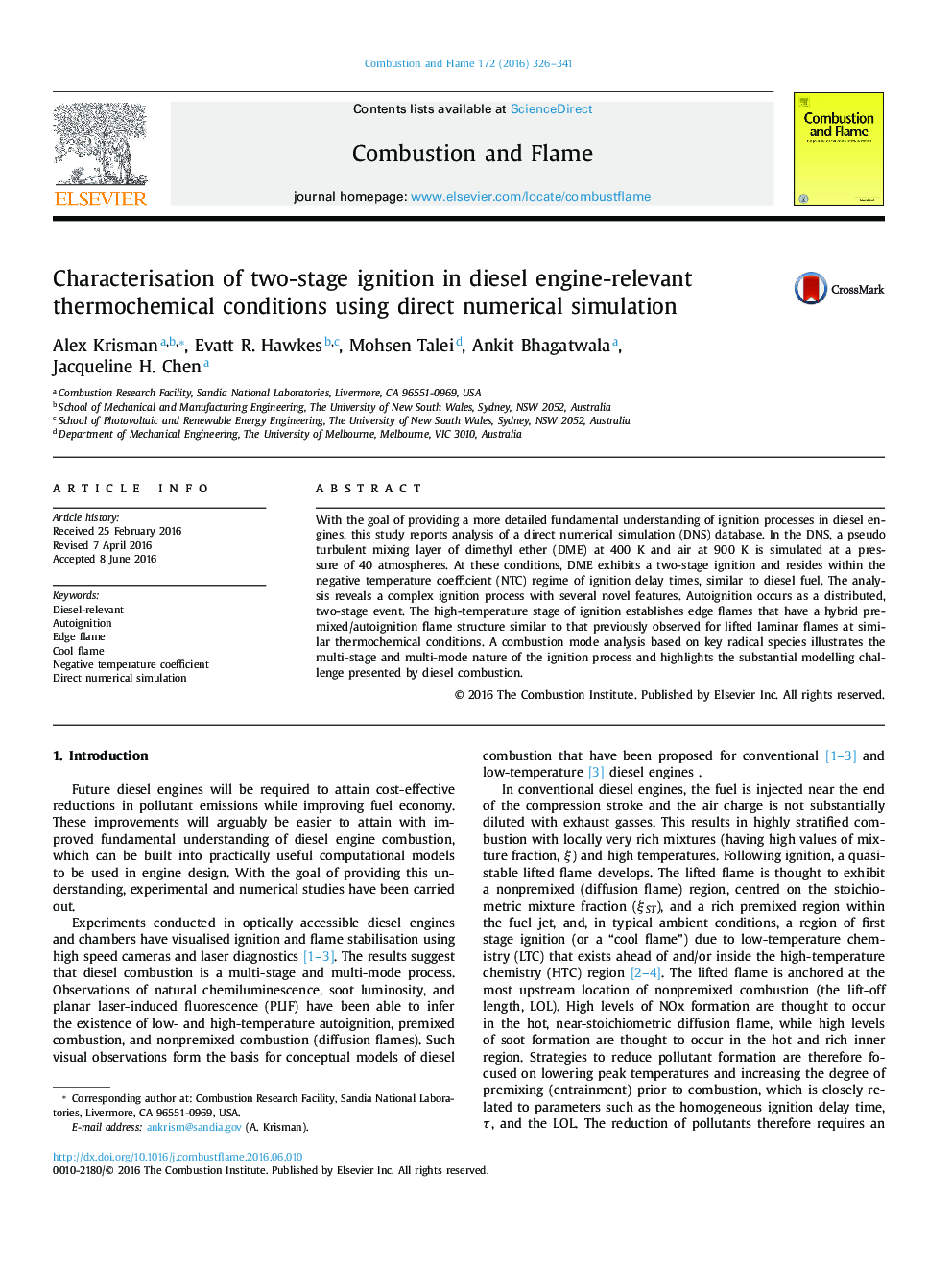| Article ID | Journal | Published Year | Pages | File Type |
|---|---|---|---|---|
| 6593996 | Combustion and Flame | 2016 | 16 Pages |
Abstract
With the goal of providing a more detailed fundamental understanding of ignition processes in diesel engines, this study reports analysis of a direct numerical simulation (DNS) database. In the DNS, a pseudo turbulent mixing layer of dimethyl ether (DME) at 400Â K and air at 900Â K is simulated at a pressure of 40 atmospheres. At these conditions, DME exhibits a two-stage ignition and resides within the negative temperature coefficient (NTC) regime of ignition delay times, similar to diesel fuel. The analysis reveals a complex ignition process with several novel features. Autoignition occurs as a distributed, two-stage event. The high-temperature stage of ignition establishes edge flames that have a hybrid premixed/autoignition flame structure similar to that previously observed for lifted laminar flames at similar thermochemical conditions. A combustion mode analysis based on key radical species illustrates the multi-stage and multi-mode nature of the ignition process and highlights the substantial modelling challenge presented by diesel combustion.
Keywords
Related Topics
Physical Sciences and Engineering
Chemical Engineering
Chemical Engineering (General)
Authors
Alex Krisman, Evatt R. Hawkes, Mohsen Talei, Ankit Bhagatwala, Jacqueline H. Chen,
